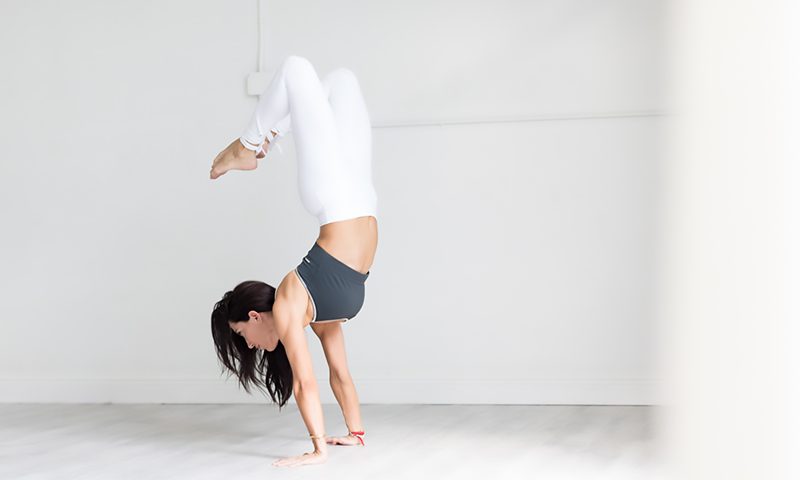
Shambhala the Mythical Kingdom in Tibetan Buddhism
6th October 2017
Dalai Lama: The Mysterious Head Monk of Tibetan Buddhism
6th October 2017The Complete Guide to Ashtanga Yoga

The Complete Guide to Ashtanga Yoga
Best described as the perfect blend of regulated breathing and dynamic postures, the traditional style of Ashtanga Yoga has formed the basis of the most popular yoga styles practised today. With thousands of yoga classes available worldwide, the Ashtanga style is still carried out in it’s traditional form to this day, with millions of people reaping the benefits daily. In this article, we explore Ashtanga Yoga in more detail, discussing everything from its history to the numerous health benefits the practice boasts.
The Basics of Ashtanga Yoga
Ashtanga yoga is a renowned practice, best performed in its correct sequential order. When carried out correctly, the process allows the individual to rediscover his or her potential – not just in yoga, but in on all levels of consciousness. Combining the practice of deep breathing known and Ujjayi Pranayama, a set sequence of postures and choosing a specific point to focus on at the beginning of each session, Ashtanga yoga allows individuals full control of their senses, encouraging each person to form a deeper awareness of their own being. It is believed that practising this discipline regularly will allow one to increase steadiness of the body and mind, leading to a happy and healthy life.
With the term literally translating to ‘eight limbs,’ the word Ashtanga sums up the practice perfectly. The eight areas are best described as Yama (meaning abstinences), Niyama (meaning observances), Asana (meaning postures), Pranayama (meaning breath control), Pratyahara (meaning sense withdrawal), Dharana (meaning concentration), Dhyana (meaning meditation), and Samadhi (meaning contemplation). One of the key aspects to focus on first is breathing control, or Pranayama in its official term. Once the individual has mastered this technique, it is easier to go on and develop the other areas, with the proper practice of pranayama well established within their practice.
Another term commonly used in Ashtanga Yoga is ‘Vinyasa’, which translates simply to ‘breath synchronised movement’. This point reinstates the fact that breathing control remains at the heart of the discipline, linked the postures to one another within the correct, pre-established sequence. When able to synchronise breathing control with a movement of the body, an internal heat is thought to produce in the body. The heat is believed to purify the body’s muscles and organs, in addition to ridding the body of an array of toxins while releasing beneficial minerals in their place. The sweat caused by the heat is typically massaged back into the skin, with the idea of nourishing the body with the natural hormones that the sweat contains. As the individual learns to control and regulate their breathing, blood is well circulated around the entire body, resulting in overall good health and longevity.
The History of Ashtanga Yoga
Originating from an ancient text named the ‘Yoga Korunta’, Ashtanga Yoga was first thought to be written about by Vamana Rishi. In the 1900s, the religious text was passed down to Sri T. Krishnamacharya by Rama Mohan Brahmachari – his guru at the time. Even thousands of years ago, the practice o Ashtanga Yoga was focussed on uniting regulated breathing with movement to produce a unique style of yoga with relaxing and meditative benefits. Ensuring to practice the form regularly for long periods of time enabled individuals to rid their mind of emotional afflictions, focussing only self-awareness as the heat from the practice endorsed their being with various health benefits. Though back then, Ashtanga Yoga was seen as being a unique and contemporary practice, today Ashtanga forms the basis of most yoga practices popular in the West.
The traditional method of practice is known as the ‘Mysore-Style’. This style is best practised at the students own pace, with certified instructors present to supervise and ensure the asanas are being performed correctly. Ideal for beginners, the sessions involves new postures being taught as each individual builds up strength, stamina and regulated breathing – allowing students to stick to a pace they feel comfortable with.
The Goals and Benefits
A selection of great health benefits is believed to come from regular Ashtanga Yoga practice. While it doesn’t take long for the benefits to begin showing themselves, the continually develop with ongoing practice, meaning that even the most experienced yogis are noticing new benefits as time goes on.
The most sought-after physical benefit of the practice is typically strengthening of the muscles. Encouraging students to develop the ideal balance of strength and flexibility, certified instructors strive to unlock the potential of each individual in the sessions. As we go through daily life, patterns of incorrect muscle movement can become deeply rooted, resulting in muscle memory continuing to carry out these movements, despite the fact that they may become detrimental to our health. Ashtanga yoga helps individuals to confront these patterns, giving people the opportunity to re-programming their physical alignment.
Emotionally, Ashtanga Yoga can encourage individuals to become more open to their surroundings and inner-self. Regularly practising the correct sequence of asanas has the potential to release emotional trauma stored deep within the muscles, allowing deep-rooted experiences to be emotionally expelled from the body – greatly improving one’s emotional well-being. Ideal for promoting calmness and tranquillity within the body and mind, regulated breathing (Pranayama) learnt in Ashtanga can be used in all aspects of daily life.
In Summary
The end focus of Ashtanga Yoga is to provide users with a well-focused body and mind, completely in tune with their inner-self and the world around them. Taking the time to practice regulated breathing can bring significant benefits to one’s life, even if you don’t opt to use the full process of the Ashtanga style – so why not pick up a comfy yoga top and attend a local class. For those that do opt to practice the teachings as a whole, the long-term health benefits can be immeasurable.

